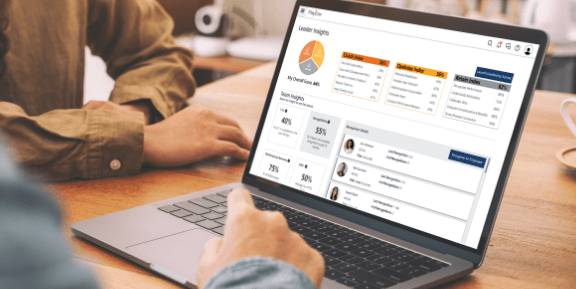Diversity: it’s a concept that’s making headlines. Many employees are vocalizing that diversity is important to them. In fact, according to the Pew Research Center, 56% of workers say focusing on increasing diversity, equity, and inclusion at work is a good thing. This idea has bubbled up to companies and company leadership, who are beginning to place a finer focus on the true importance of diversity.
There’s just one problem: companies know they should be focusing on diversity in the workplace, but they’re struggling to actually take any steps to implement diversity programs. Getting buy-in at the top is key to a successful strategy.
The reality is that workplaces are becoming more diverse than ever, providing benefits that spill over into the entire organization. Companies need to take the initiative to make diversity training a key element moving forward.
This means being proactive and preparing for a more diverse workforce. It means structuring workflows and processes in the organization to enhance and encourage diverse points of view and perspectives.
Why Diversity Training is Important
Whether we like it or not, the research that confirms we tend to like those who are similar to us (or at least those we think are similar to us) is extensive. That means we have to actively challenge our biases. From hiring practices to how we communicate and lead, we need to find ways to bring in different perspectives and implement solutions that accommodate differences.
Diversity and inclusion training is the vehicle for this important learning. Diversity training includes structured programs and workshops designed to help employees and leaders understand, appreciate, and effectively work across all dimensions of human difference, including race, gender, age, physical and cognitive abilities, LGBTQ+ identities, and neurodivergent thinking styles.
Diversity training typically includes awareness exercises about unconscious biases, cultural competency development, and practical strategies for creating an inclusive workplace. For example, participants might engage in perspective-taking activities, learn to recognize microaggressions, practice inclusive language, or work through case studies on providing reasonable accommodations.
How Diversity Training Raises Awareness in the Workplace
Successful diversity training enables employees to become more comfortable with concepts such as unconscious bias at work and cultural competency. When employees become more familiar with these ideas, they can begin to identify how these concepts show up in real-world situations.
Diversity training ideas include:
- Invite guest speakers from diverse backgrounds who can share authentic perspectives and lived experiences that might otherwise remain invisible to your team.
- Create employee resource groups (ERGs) that provide safe spaces for underrepresented employees while educating allies about challenges faced by different communities.
- Incorporate regular microlearning opportunities — such as short videos, articles, or discussion prompts — that keep diversity and inclusion top of mind between more formal training sessions.
Encourage Innovation Through Diverse Perspectives
It’s been proven over and over that non-homogenous teams are more effective. Diverse teams have a distinct advantage when it comes to decision-making, including bringing a broader perspective to the challenge, identifying more options for solving it, reducing bias, and increasing accountability. McKinsey & Company research shows companies in the top quartile for gender diversity and ethnic diversity financially outperform those in the bottom quartile by 39%.
To harness diverse perspectives effectively, organizations should implement structured inclusive meeting practices, such as rotating facilitation roles and using round-robin techniques to ensure all voices are heard. Creating digital collaboration spaces with anonymous ideation features can help reduce status bias and amplify contributions from team members who might otherwise remain quiet. Additionally, training team leaders in conflict facilitation skills enables them to transform disagreements from different perspectives into productive problem-solving rather than interpersonal tension.
Develop Inclusive Thinking and Actions Across Teams
Fostering diversity requires effort toward building a more inclusive environment so all people, especially those from underrepresented groups, feel comfortable and valued. Successful diversity training gets employees in the habit of thinking about inclusion and how they can behave in a way that makes the workplace more inclusive for everyone.
Inclusive workplace behaviors manifest in both daily interactions and systemic practices. Using gender-neutral language in communications and avoiding assumptions about pronouns shows respect for gender diversity. Creating flexible work arrangements acknowledges different needs, whether for parents, caregivers, people with disabilities, or those observing cultural holidays.
Inclusive behaviors, when practiced consistently, create an environment where diversity can truly thrive.
Promote Sensitivity and Prevent Workplace Bias
When employees are encouraged to understand the different perspectives and comfort levels of others, they are more likely to think about how their actions could unintentionally cause offense. Diversity training can go a long way toward preventing discrimination and harassment by making employees more capable of empathy.
For example, sensitivity training helps employees recognize and address microaggressions and workplace bias. It also fosters awareness of cultural differences in communication styles, such as varying levels of directness or personal space preferences, reducing misunderstandings that could lead to workplace tensions. Training can further prevent discrimination by educating employees on implicit biases that may influence decision-making in hiring, promotions, and daily interactions.
Business Benefits of Diversity and Inclusion in the Workplace
Still not convinced that diversity and inclusion in the workplace matter?
Implementing diversity training in the workplace leads to a more inclusive, respectful, and collaborative environment, benefiting both employees and the business as a whole. By fostering awareness and understanding, diversity training helps reduce workplace conflicts, enhances teamwork, and ensures employees from all backgrounds feel valued. Benefits of diversity training and diverse workplaces include:
- Enhances recruitment: A commitment to diversity makes companies more appealing to a wider range of job seekers.
- Improves morale: Inclusive environments foster collaboration, engagement, and a sense of belonging.
- Increases employee retention: Employees are more likely to stay in workplaces where they feel respected and valued.
- Improves customer satisfaction: A diverse workforce is better equipped to understand and serve diverse customer needs.
- Increases revenue: Companies with strong diversity and inclusion efforts often see higher innovation, productivity, and profitability.
Here are just a few statistics that highlight the significant impact on company revenue, innovation, and engagement:
- 94% of corporate directors report that diversity promotes unique perspectives and viewpoints, according to Entrepreneur.
- 87% of corporate directors say diversity improves board performance, while 76% agree a diverse board boosts company performance.
- McKinsey & Company research shows companies in the top quartile for gender diversity and ethnic diversity financially outperform those in the bottom quartile by 39%.
- 56% of workers say focusing on increasing diversity, equity, and inclusion at work is a good thing, according to the Pew Research Center.
Diversity Training for the Modern Workplace
Paycor knows that when an organization is dedicated to fostering and celebrating diversity and inclusion in the workplace, the whole team thrives. We’re dedicated to helping organizations incorporate diversity and inclusion into the organizational culture by offering an online platform for their teams with bite-sized content that enforces retention and makes learning a habit. Our collection on inclusion and diversity helps employees learn practical strategies and techniques for building lasting culture change.
In addition, with Paycor Analytics, you can explore the composition of your workforce with a comprehensive breakdown of headcount by gender and ethnicity and benchmark the data against other Paycor customers in key industries. This information is helpful for pay equity audits and other DEI initiatives. Learn more with a guided product tour.
Diversity Training FAQs
Still have questions? Read on.
Why Is It Important to Learn about Diversity and Inclusion?
Learning about diversity and inclusion helps organizations tap into diverse perspectives that drive innovation and better decision-making, while creating environments where all employees feel valued and can contribute their best work.
How Do You Train Diversity in the Workplace?
Effective workplace diversity training combines structured workshops, ongoing learning opportunities, immersive experiences, and practical application exercises, ideally customized to address the specific needs and challenges of your organization.
Which Type of Diversity Training is Most Effective?
The most effective diversity training is ongoing rather than a one-off session. Programs that focus on perspective-taking and behavior change tend to have the most lasting impact.









